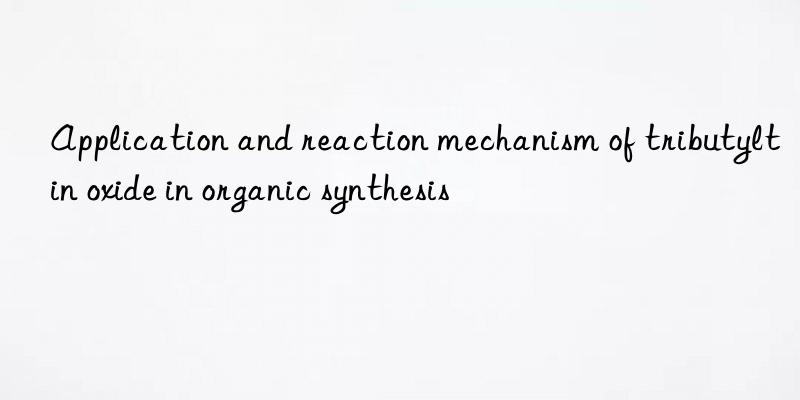
Introduction
Tributyltin oxide is an important organometallic compound with various applications in organic synthesis. It is often used to catalyze or participate in various organic chemical reactions, such as Stille coupling reaction, Heck reaction, etc. This article will explore the main application areas of tributyltin oxide and analyze its mechanism in specific reactions in detail.
1. Basic properties of tributyltin oxide
Tributyltin oxide (C12H27SnO), with a molecular weight of approximately 289.67 g/mol, is a colorless to light yellow liquid. It has good solubility and can be dissolved in a variety of organic solvents, such as ether, benzene, etc. Due to its unique chemical properties, tributyltin oxide exhibits excellent reactivity in organic synthesis.
Applications of di- and tributyltin oxide
2.1 Stille coupling reaction
Stille coupling reaction is a method of cross-coupling using organotin reagents and halogenated hydrocarbons in the presence of palladium catalyst. Tributyltin oxide, as an organotin reagent, can participate in the reaction as a nucleophile or auxiliary reagent. This coupling reaction is widely used in the synthesis of complex molecular structures, especially in medicinal chemistry and natural product synthesis.
2.2 Heck reaction
The Heck reaction refers to the reaction in which olefins and aryl halides or heterocyclic halides are coupled in the presence of a palladium catalyst to form substituted olefins. Tributyltin oxide is sometimes used as an auxiliary to improve the selectivity and yield of the reaction.
2.3 Other organic synthesis reactions
In addition to the two main applications mentioned above, tributyltin oxide is also involved in other types of organic synthesis reactions, such as:
Suzuki coupling reaction: Although organoborates are commonly used as electrophiles, in some cases tributyltin oxide can also be used in similar coupling processes.
Sonogashira coupling reaction: In the process of forming carbon-carbon bonds, tributyltin oxide can be used as an auxiliary reagent to improve reaction conditions.
3. Reaction mechanism
3.1 Stille coupling reaction mechanism
In the Stille coupling reaction, the mechanism of action of tributyltin oxide is as follows:
Coordination stage: The palladium catalyst first coordinates with the halogenated hydrocarbon to form a palladium (II) complex.
Transmetallation: Next, an organotin reagent (such as tributyltin oxide) reacts with a palladium complex to produce a palladium-organic intermediate.
Beta-elimination: Subsequently, the palladium-organic intermediate undergoes a beta-elimination reaction, releasing a new carbon-carbon double bond.
Oxidative addition: Finally, through the oxidative addition of palladium, the target product is generated and the palladium catalyst is regenerated.
3.2 Heck reaction mechanism
In the Heck reaction, tributyltin oxide as an auxiliary reagent may participate in the following steps:
Palladium catalyst activation: Tributyltin oxide may help palladium catalysts activate halogenated hydrocarbons more effectively.
Promote the formation of carbon-carbon bonds: By changing the electron cloud density distribution in the reaction system, tributyltin oxide can promote the formation of carbon-carbon bonds.
4. Environmental and safety considerations
Although tributyltin oxide is widely used in organic synthesis, its potential environmental and health risks cannot be ignored. Tin compounds can be toxic to aquatic life and can pollute the environment if not handled properly. Therefore, relevant safety operating procedures should be strictly followed and appropriate protective measures should be taken during use.
Conclusion
Tributyltin oxide, as a multifunctional organometallic reagent, plays an important role in modern organic synthesis. Through its in-depth understanding and rational application, it can effectively promote the development of new drug research and development, new material synthesis and other fields. However, while enjoying the convenience it brings, we should also pay attention to the environmental and health risks it may bring, and take active measures to reduce negative impacts.
Extended reading:
Tetrachloroethylene Perchloroethylene CAS:127-18-4
Toyocat TE tertiary amine catalyst Tosoh
Toyocat RX5 catalyst trimethylhydroxyethyl ethylenediamine Tosoh

 微信扫一扫打赏
微信扫一扫打赏

